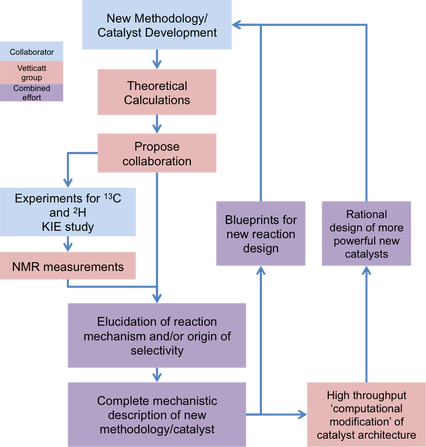
Collaborative Mechanistic Studies in the Vetticatt Group
In the Vetticatt group, we attempt to be at the forefront of new reaction discovery and catalyst design by collaborating with some of the top methodology groups from around the world. Our goal is to minimize the time-lag between new reaction discovery and its complete mechanistic description. We follow the literature and identify topical problems of broad interest and propose collaborative mechanistic studies based on preliminary calculations. Graduate students in the Vetticatt Lab design the isotope effect experiments that are performed in the collaborator's laboratory. The samples are then shipped to us for natural abundance isotope effect measurements. The combined experimental and theoretical results are used to elucidate key aspects of the mechanism of the reaction. The mechanistic picture that emerges is used as a blueprint for new reaction development and catalyst design. If you are interested in collaborating with us, please email Matt at vetticatt@binghamton.edu.